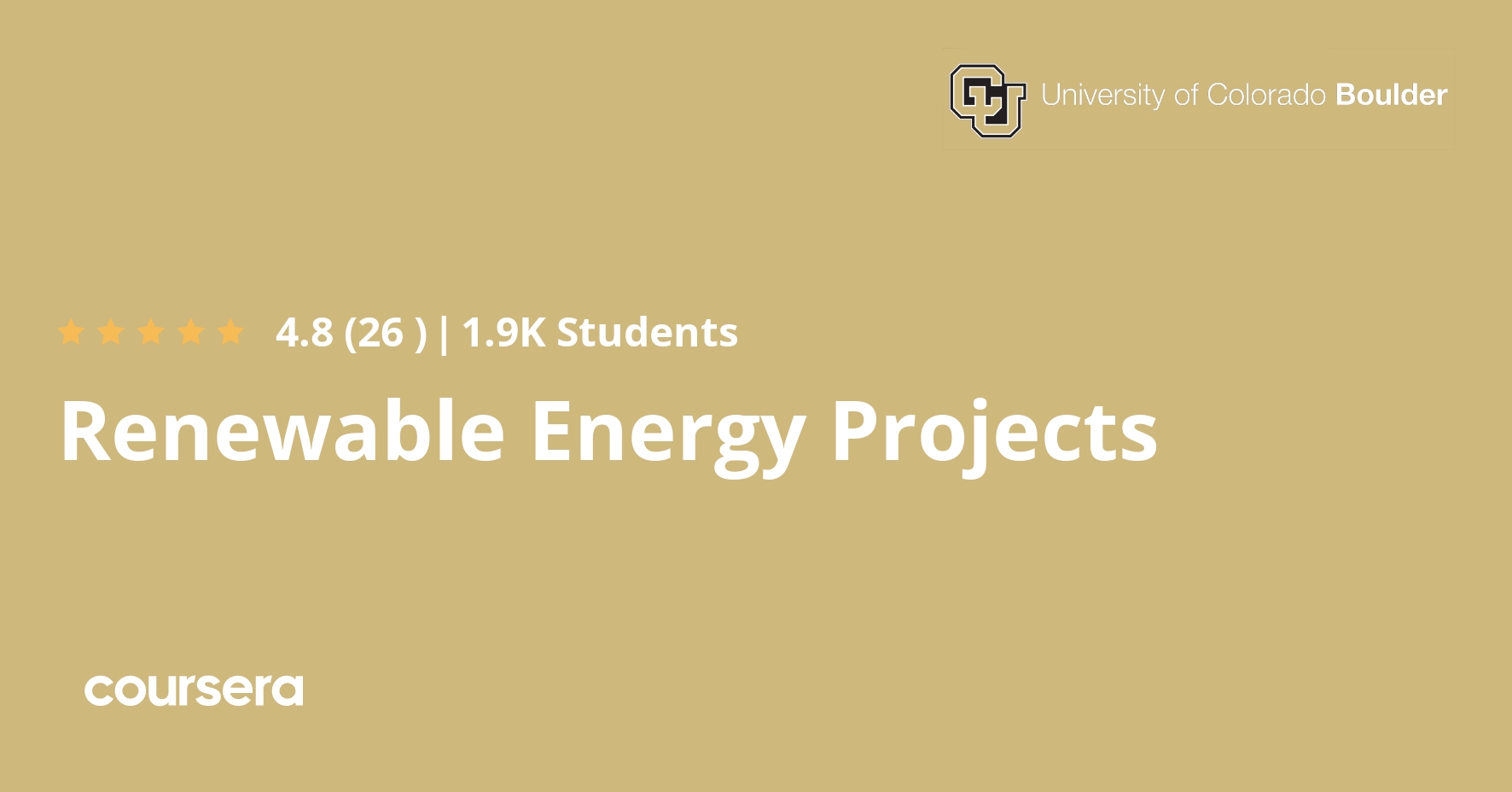Description
Understanding renewable energy technologies is important, but equally important is knowing how to effectively deploy these technologies to provide renewable energy to end-users – the topic of this course. Upon completion of the course, you will understand the development and management of renewable energy projects, large and small, from conception to launch and subsequent operation.
This course will teach you to plan, execute, and operate renewable energy projects such as solar PV plants, wind farms, and geothermal generators. We first describe how to develop a renewable energy feasibility study and make go-no-go project decisions. We then examine project site selection and evaluation of renewable technology alternatives and technology vendors. Next, we review methods for financing and organizing renewable energy projects. The course concludes with an examinations of project construction, operations and maintenance, repowering, and plant decommissioning. These capabilities will round out your understanding of renewable energy uses and deployment – come join us!
Note that this course is the third in a four-course Coursera specialization in Renewable Energy:
1. Renewable Energy Technology Fundamentals
2. Renewable Power Systems
3. Renewable Energy Projects
4. Renewable Energy Futures
What you will learn
Project Planning
This first week’s module examines the important topics of renewable energy project planning and site selection. The first step in developing a renewable energy project is to undertake an initial high-level feasibility study based on project goals and objectives, resource availability, local conditions, and preliminary financial analysis. Based on the results of this analysis, a decision must be made to proceed with the project plan, modify the plan, or abandon the plan in favor of other opportunities (the go-no-go decision). If the decision is made to proceed with a project, the location and site of the project is decided based on anticipated energy resources, regulatory and economic environments, and stakeholder interests. With a positive feasibility report and a site selected, intensive development of a renewable energy project can proceed!
Renewable Energy Project Assessments
The module this week summarizes how we can thoroughly measure a renewable energy resource (solar, wind, hydro…) over time at a chosen project site and to develop energy generation forecasts. Next, we address the needed technologies, equipment, and infrastructure necessary to develop a renewable energy project. With this information, we will be prepared to undertake detailed financial analysis of the developing project in the next module!
Project Financing
In the module for this week, we survey the many ways that renewable energy projects are financed. First, we review basic financial concepts such as including the time value of money (TVM), future and present value, perpetuities and annuities, discount rates, discounted cash flow (DCF), net present value (NPV), and Internal Rate of Return (IRR). We then use these concepts to create project financial profit, loss, and cash flow projections. We conclude with a review of the various ways that renewable energy projects are financed and how renewable energy projects are organized depending on their financial structure. Since (in)appropriate financing can make or break a project, a good understanding of project financing is imperative for renewable energy project developers!
Project Execution
After extensive project data gathering and planning, it is finally time to execute our plan, to construct our renewable energy plant, and to generate renewable energy! Getting to this point has been a long process, but recall that “a failure to plan is planning to fail.” In this module, we describe the steps required to construct a renewable energy plant; commission it to ensure it is operating properly; and then to operate and maintain the plant over its intended lifespan. Finally, at the end of its life, we will need to determine if the plant can be economically “repowered,” or if it should be decommissioned and torn down.





